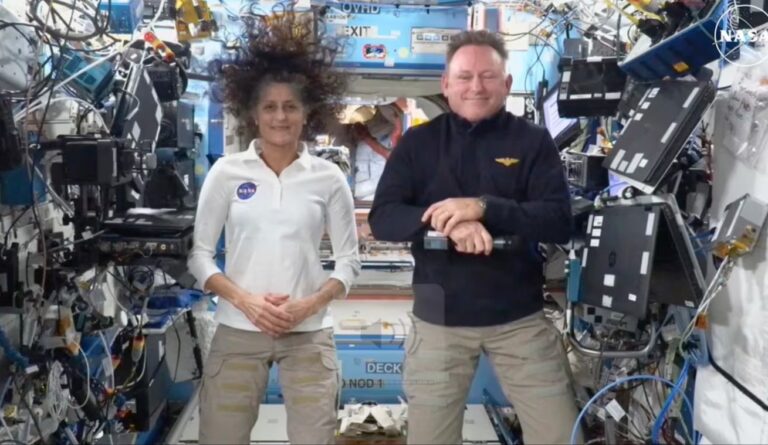NIN Web Desk : (Dr subhrojyoti chattopadhyay) ; On the evening of March 14 (Eastern Time), a SpaceX Falcon 9 rocket lifted off, carrying four astronauts from three different countries to the International Space Station (ISS). This mission, called Crew-10, is expected to provide relief for astronauts currently aboard the ISS, including those on NASA’s troubled Starliner spacecraft (Sunita and Butch). The Crew-10 mission’s Crew Dragon capsule, named Endurance, successfully reached the International Space Station (ISS) and docked with its Harmony module early on Sunday, March 16th at 12:04 a.m. EDT (March 16th, 9:34 a.m. IST).
The two spacecraft, Endurance carrying the new crew and the ISS as the orbiting laboratory, connected while orbiting 260 miles (approximately 418kms) above the Atlantic. The Harmony module serves as a crucial connecting hub on the ISS, providing a docking port for spacecraft like Endurance and facilitating movement between other station segments. Crew-10 mission specialist Takuya Onishi from JAXA (Japan Aerospace Exploration Agency) expressed his gratitude after docking, saying, “It’s a great honor to be part of this mission. We have a lot of exciting work ahead, and we’re looking forward to it. A big thank you to everyone who made this journey possible.” The hatches between Crew Dragon Endurance and the International Space Station (ISS) were opened at 1:35 a.m. EDT (0535 GMT) [11:05 a.m. IST, March 16]. About 10 minutes later, the Crew-10 astronauts floated into the ISS, officially joining the crew aboard the orbiting laboratory.
The new crew members who arrived at the International Space Station (ISS) include Takuya Onishi from JAXA, NASA astronauts Anne McClain and Nichole Ayers, and Kirill Peskov from Roscosmos, the Russian space agency. Anne McClain is the commander of Crew-10, while Nichole Ayers serves as the pilot. Takuya Onishi and Kirill Peskov are mission specialists on this mission. The four astronauts will remain on the International Space Station (ISS) for around six months, which is the standard duration for crew rotations. NASA astronauts Sunita Williams and Butch Wilmore, Russian cosmonaut Aleksandr Gorbunov, and NASA astronaut Nick Hague are scheduled to return to Earth on Wednesday (Wednesday, March 19, 2025 IST) onboard SpaceX’s Dragon spacecraft.
Sunita Williams and Barry Wilmore, who were test pilots for Boeing’s new Starliner capsule, were originally set for an eight-day mission. However, due to helium leaks and thruster malfunctions, their mission was extended to over nine months as the spacecraft was deemed unsafe for return. As a result, the Starliner had to be sent back empty in September. Astronauts returning from space often experience walking difficulties, vision issues, dizziness, and a condition called “baby feet.” This happens because the thick skin on the soles of their feet wears away in space, making them soft and sensitive—similar to a baby’s skin.
On Earth, our feet constantly deal with gravity and friction, which naturally thickens the skin to provide protection against discomfort and wear and tear. However, after spending months in space, astronauts no longer experience this resistance, causing the hardened skin to peel off. Once back on Earth, it takes weeks to months for the skin to toughen up again until then, walking can feel uncomfortable or even painful as their feet gradually readjust.
The estimated Landing Time is if the crew departs on Wednesday (IST), their splashdown is expected by late Wednesday (IST) or sometime on Thursday, March 20, 2025 (IST). However, the exact timing may vary based on mission parameters, weather conditions, and landing zone adjustments. A 12 to 24-hour window from undocking to splashdown is a reasonable estimate based on past Crew Dragon missions.
DISCLAIMER
Our news media denounces any form of bias and disapproves of sensationalism. The disseminated news is entirely educational and aimed at social awareness. Our media maintains absolute impartiality, adhering solely to the purpose of education and social consciousness.


